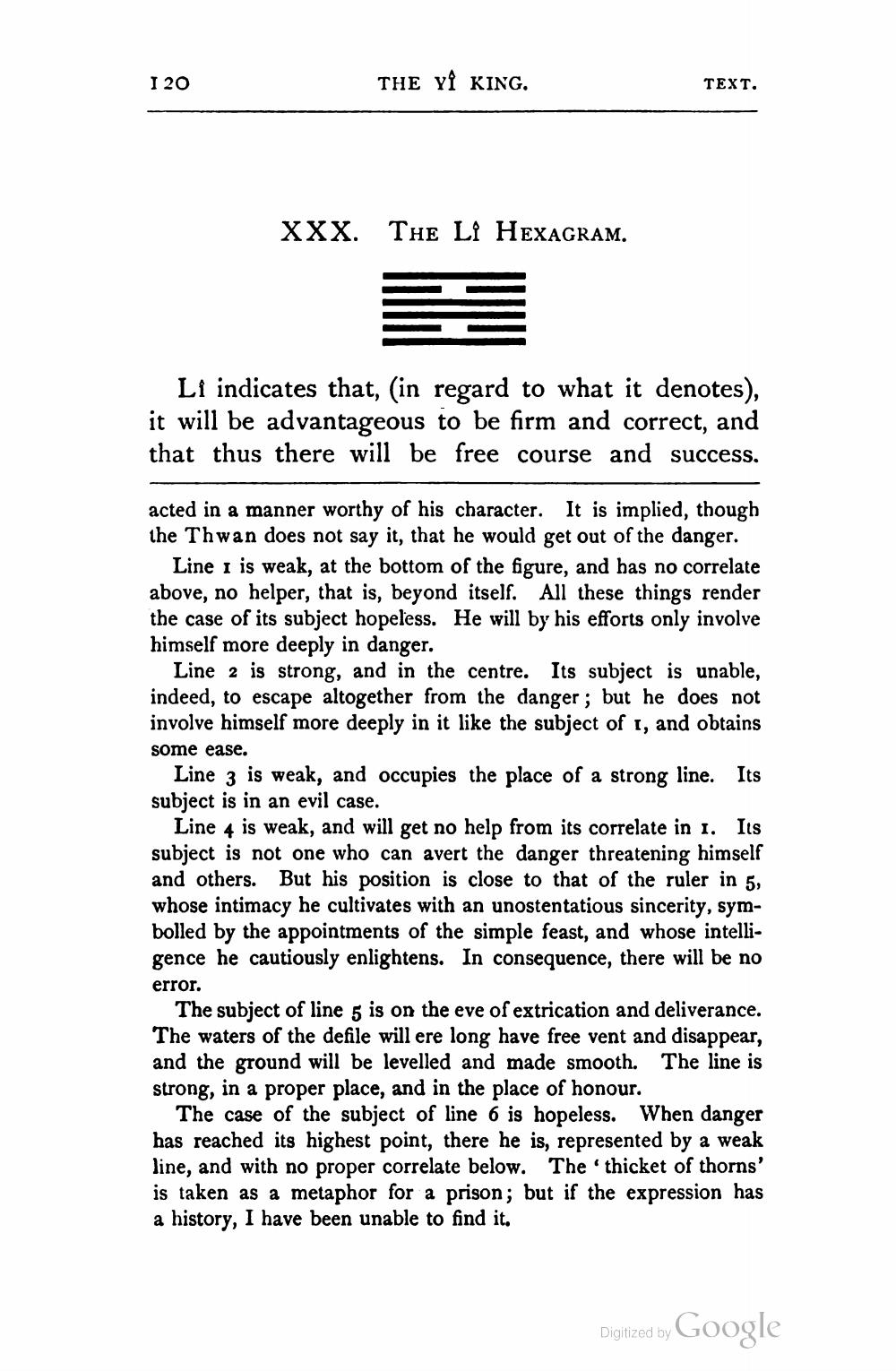________________
I 20
THE YI KING.
TEXT.
xxx. THE LI HEXAGRAM.
Li indicates that, (in regard to what it denotes), it will be advantageous to be firm and correct, and that thus there will be free course and success.
acted in a manner worthy of his character. It is implied, though the Thwan does not say it, that he would get out of the danger.
Line 1 is weak, at the bottom of the figure, and has no correlate above, no helper, that is, beyond itself. All these things render the case of its subject hopeless. He will by his efforts only involve himself more deeply in danger.
Line 2 is strong, and in the centre. Its subject is unable, indeed, to escape altogether from the danger ; but he does not involve himself more deeply in it like the subject of 1, and obtains some ease.
Line 3 is weak, and occupies the place of a strong line. Its subject is in an evil case.
Line 4 is weak, and will get no help from its correlate in 1. Its subject is not one who can avert the danger threatening himself and others. But his position is close to that of the ruler in 5, whose intimacy he cultivates with an unostentatious sincerity, symbolled by the appointments of the simple feast, and whose intelligence he cautiously enlightens. In consequence, there will be no error.
The subject of line 5 is on the eve of extrication and deliverance. The waters of the defile will ere long have free vent and disappear, and the ground will be levelled and made smooth. The line is strong, in a proper place, and in the place of honour.
The case of the subject of line 6 is hopeless. When danger has reached its highest point, there he is, represented by a weak line, and with no proper correlate below. The thicket of thorns' is taken as a metaphor for a prison; but if the expression has a history, I have been unable to find it.
Digitized by Google




